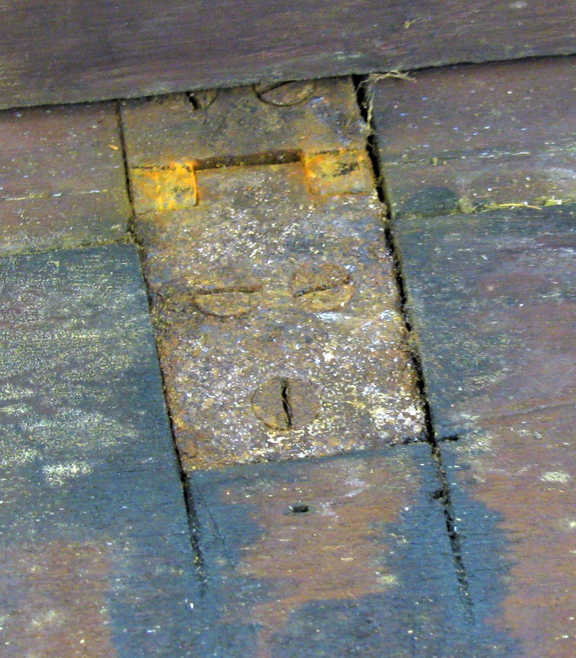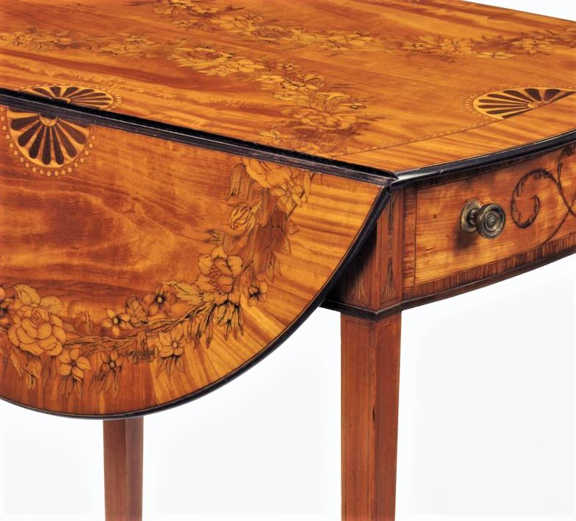THE WEEKEND FINE ANTIQUE FURNITURE RECOGNITION COURSE
HOW TO RECOGNISE THE AGE & ORIGINALITY OF ANTIQUE FURNITURE [course 08]
THE TOTAL COST OF THIS COURSE IS £350 & INCLUDES: 2 DAYS COURSE TUITION, A LIGHT LUNCH ON SATURDAY & 1 WEEK HOME STUDY COURSE SECTION. A DEPOSIT OF £150 IS REQUIRED IN ADVANCE TO SECURE YOUR COURSE PLACE.
COURSE DESCRIPTION
The course has been designed to have a purely practical purpose, it is intended to provide the buyer and restorer of fine antique furniture with the essential background knowledge to buy and restore with confidence.
On this course you will learn to recognise the age and originality of fine English antique furniture.
FIRSTLY you will learn about the distinctive construction and design characteristics that set each period of antique furniture apart from the next. You will learn about the evolution of English furniture design.
For example please see the 18th century walnut veneered chest of drawers in the right-hand margin. It is from what we are calling “the walnut period”.
The first design characteristic in the list above the picture is that the carcass, the main structural element of this piece of furniture is made from softwood. It may seem strange, but the carcass was rarely made of any other timber, even when veneered in fine marquetry. You can rely on this rule along with the others in the list to evaluate the age and originality of a chest of drawers like this one. The second design characteristic is that the walnut veneer on the drawer fronts is usually laid vertically and often in matched panels. Again this is a rule that you can rely on to help you determine the age and originality.
The third design characteristic is walnut veneer of this age was always at least 2 or 3 mm thick, cut with a saw, not under 1 mm thick or less as found in later reproductions. A piece of antique furniture like this one will have many more significant construction and design characteristics typical only to this age and period of furniture. These you will learn on this course.
SECONDLY on this course you will learn how to tell the age and originality of antique furniture by observing the colour and texture of its locks, brass fittings and unpolished surfaces (usually the underside). The polished surfaces are repolished from time to time but the unpolished surfaces are not. If you know what to look for they will tell you everything you need to know about the age and especially about the originality of any piece of antique furniture. The colour and appearance of the polished surfaces are also very important in discerning the age and originality, each wood ages in its own particular way. Please see the examples in the right-hand margin.
THIRDLY you will learn about the materials used in the construction of antique furniture from period to period. For example, how to tell the difference between hand cast brass hinges, handles and other fittings. You will learn how screws, nails and veneer should look in each antique furniture period and how they compare with their reproduction counter parts. Please see the examples in the right-hand margin.
FOURTHLY To make what we are doing possible it is necessary for me to divide English furniture into distinct periods. This can be done using the reigns of kings and queens, or as I have chosen to do in the style and words of one of my favourite authors, Percy Macquoid. A History of English Furniture, one of the reference books for this course.
PERIOD ONE: The age of oak, dating from 1500 to 1660, comprising furniture that can be attributed to the Renaissance and its evolution from the Gothic.
PERIOD TWO: The age of walnut from 1660 to 1720, where the change is varied by the restoration and Dutch influence, followed by a distinctly assertive English spirit.
PERIOD THREE: The age of mahogany from 1720 to 1770, where the introduction from France of new ideas in design clarity marked another change.
PERIOD FOUR: The age of satinwood from 1770 to 1820, inspired by affection for all things classical.
PERIOD FIVE: All furniture after 1820.
COURSE STRUCTURE
The course is two days long. You will spend both days with Josie and Peter Thomson the tutors, in the course venue examining and discussing pieces of antique furniture. This will be from 9:30 am to 5:00 pm. There will be 1 hour for lunch and there are coffee/tea breaks during the day. The other five days of the course you will complete the home study section of this seven day course at home. This needs to be done before the start of the course. The home study course is designed to provide the essential background preparation. This ensures you learn the most you possibly can on the weekend you spend with us, discussing and examining antique furniture.
WHERE THIS COURSE IS HELD AND ACCOMMODATION
This course will be held at Exeter University or in one of the other suitable venues near the centre of the beautiful cathedral city of Exeter within easy reach of the M5 motorway, railway stations and airport.
THE KNOWLEDGE AND EXPERIENCE OF THE COURSE TUTORS
Josie Thomson:She completed her training with distinction 24 years ago, a master craftswoman. She specialises in refinishing and French Polishing techniques. Her ability to render a difficult antique furniture repair invisible is unsurpassed.
Peter Thomson:He is a 4th generation master craftsman. He completed a traditional training at his family’s antique furniture restoration workshops and then attended West Dean College where he received a B.A.D.A diploma in antique furniture restoration and conservation in 1974.
Our superb training sparked off a great love for antique furniture that culminated in the privilege of being asked to restore some of the finest antique furniture in the world and to teach restoration techniques in the USA and later in the UK. Our previous clients include The National Trust, Sotheby’s, the Jordanian Royal family, museums, private collectors and antique dealers in Britain and America.
THE SKILLS YOU REQUIRE IN ORDER TO PARTICIPATE ON THIS COURSE
This course is open to everyone, men and women of all ages, no knowledge of any sort is required in order to participate. This is an ideal course to attend if you are on the One Year (36 week) Diploma course in Antique Furniture Conservation, Restoration and Refinishing Techniques (including French Polishing)
DATES FOR THIS COURSE
Please call Peter Thomson 01392 432786 regarding this course.
FEES & BOOKING
THE TOTAL COST OF THIS COURSE IS £395 & INCLUDES: 2 DAYS COURSE TUITION, A LIGHT LUNCH ON SATURDAY, 1 WEEK HOME STUDY COURSE SECTION. A DEPOSIT OF £150 IS REQUIRED IN ADVANCE TO SECURE YOUR COURSE PLACE.
If you would like to discuss any aspect of this course please call Josie or Peter Thomson on
+44(0)1392 432 786 or enquire via our Contact Page.
We provide an attractive Gift Card with an enclosed course voucher that makes one of our courses the perfect birthday or other present.

An early 18th century chest of drawers with the classic construction and design characteristics of the walnut period:
1. Softwood carcass.
2. Veneer on the drawers laid vertically. With simple crossbanding (could have been herring-bone).
3. Veneer was 2 or 3 mm thick at least.


A later 18th century dining table with some of the classic construction and design characteristics of the mahogany period:
1. The pad foot on a straight tapering leg.
2. The table is made of Cuban mahogany.
3. Colour of the polished surface fades to a distinct dark brown colour.


The same 18th century dining table as shown above. Learn to recognise original surfaces;
1. Notice the black grease mark around the outside edge of the table top.
2. The grooves left by the leg as it opens to support the table leaf.
3. The heavy oxidization overall unpolished surfaces that vary, depending on the type of wood. You will learn to recognise the look of an original surface like this.

Close up of the original hinge from table above.


A late 18th century Pembroke table with some of the classic construction and design characteristics of the satinwood period:
1. The square tapering legs with brass and leather castors.
2. The Satinwood has turned a distinctive honey brown colour.
3. The floral inlay and crossbanding.



